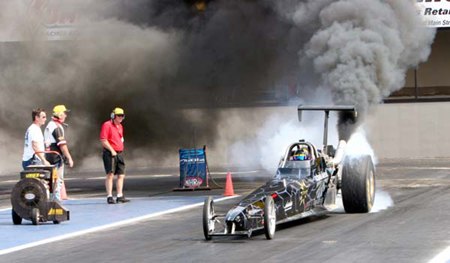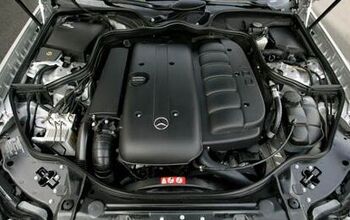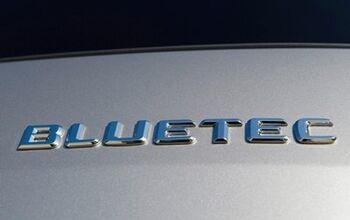The Truth About Diesels

No wonder the Germans are so gung-ho on sending their diesels across the pond. Europe’s two-decade long diesel-keg party has been crashed by a new generation of super-efficient, clean and cheaper gasoline engines. A royal diesel-overproduction hang-over is inevitable. The Germans’ morning-after solution: send the stinky leftovers to enthusiastic Yanks waiting with open arms, who’ve conveniently forgotten their killer hangover from the last US diesel orgy.
In 1892, an experimental ammonia engine literally blew up in engineer Rudolph Diesel's face. Laid-up in a hospital bed, he pored over Nicolaus Otto’s pioneering work on the internal combustion engine. Diesel identified its weakness.
Diesel tumbled to the fact that the Otto engine’s efficiency was intrinsically compromised by the fact that it mixed fuel with air prior to compression. Too much compression resulted in uncontrolled pre-detonation. Diesel’s solution: inject fuel separately from the air to allow super-high compression and eliminating the need for a throttle (reducing pumping losses). Diesel's engine was roughly 30% more efficient than Otto's.
In 1989, VW/Audi ushered in the modern direct-injection (TDI) diesel. The group's oil burning powerplant set a high-water mark in the diesel’s long development. With Europe’s high fuel costs, the more expensive (yet efficient) diesel engine could now pay for itself quite easily. The calculation triggered Europe's diesel-boom, resulting in a 50 percent market share vs. gasoline-engined propulsion.
But Europeans have been paying a price (other than at the pumps): particulate emissions (Particulate Matter, or “PM”) and NOx pollution. Many European cities have serious particulate and diesel odor problems. Several European cities impose restrictions on diesels during PM alerts.
The new generation of “clean(er)” diesels that meet the US Tier2 bin5 standards cut PM emissions substantially, but not completely. Already, there are warnings that PM from “clean” diesels still poses a significant health risk.
The diesels coming our way carry several other penalties, especially versus the gas hybrid. The complicated and expensive NOx catalysts and urea injection schemes (“BlueTec”) cut efficiency by five percent. Meanwhile, the next Prius is projected to be 15 to 20 percent more efficient. And Toyota is bringing down hybrid production costs.
The diesel vs. hybrid mileage/cost gap widens… further. And the “clean” diesel’s just-barely compliant emissions still can’t touch the gas-hybrid’s practically breathable exhaust.
Then there's the elephant in the room: global warming. Clearly, the political winds are blowing against CO2. Diesel fuel has higher carbon content, resulting in 17 percent more CO2 per gallon of fuel burned than gasoline. With the diesel’s efficiency superiority down to 25 percent, a “clean” diesel emits only 13 percent less CO2 than yesterday’s gas engine. And that small gap is… wait… gone.
While the diesel’s efficiency peaked in 1989, and lost 5 percent to PM cleansing, gas engine development is on a roll. Engineers are systematically tackling all the inherent deficiencies that Diesel identified in his hospital bed. (No wonder Rudolf was considered paranoid; maybe he suspected that eventually the Otto engine would catch up.)
A farrago of new gas-engine technologies has converged, which Europeans have been quick to embrace. VW’s 1.4-liter 170hp TSI gas engine is a perfect example of the trend. The TSI starts off with the help of a supercharger (no turbo-lag), and then switches to turbocharging (no parasitic losses). With diesel-like torque and direct injection, it’s the best of both worlds.
A CO2 output comparison with two other similar-output VW engines is telling. Their 170 horse 1.4-liter TSI produces 174g/kms of CO2. Their 150hp 2.5-liter five cylinder engine (US Rabbit only) emits 240g/km. And their 170hp 2.0-liter TDI diesel (not US compliant) produces 160g/km.
American Rabbit drivers are paying a whopping 38 percent efficiency penalty compared to the Euro-Golf TSI, as well as giving up gobs of torque and twenty horsepower. If VW’s 170hp TDI were “cleansed” to T2b5 standards, its CO2 output would be no better then the gasoline TSI.
And that’s just the jumping-off point. Start-stop technology, full valve control, and stratified direct-injection offer anywhere from 10 to 25 percent further improvement potential. Combine these goodies with mild-hybrid assist/regeneration, and the diesel party’s kaput. No wonder the Germans are all hard at work on mild-hybrid technology. It’s their best shot to keep up with Toyota’s CO2 meister, the Prius (102g/km).
A study by the consulting firm AT Kearny confirms the diesel's demise. It predicts that only 25 percent of Europeans will find diesels an attractive economic proposition by 2020.
Have Rudolf Diesel’s paranoid nightmares come true? Not totally. Diesels are a welcome mix to the party for larger vehicles that spend a lot of time on the open road. Count on GM’s new 4.5-liter “baby” Duramax diesel to be more popular with the light-truck crowd than the gas hybrid option. But when it comes to smaller vehicles, the numbers just don’t add up.
Although Rudolf Diesel’s engine WAS intrinsically more efficient, it turns out that Otto’s engine is a lot more clever at learning new tricks.

More by Paul Niedermeyer
Latest Car Reviews
Read moreLatest Product Reviews
Read moreRecent Comments
- THX1136 While reading the article a thought crossed my mind. Does Mexico have a fairly good charging infrastructure in place? Knowing that it is a bit poorer economy than the US relatively speaking, that thought along with who's buying came to mind.
- Lou_BC Maybe if I ever buy a new car or CUV
- Lou_BC How about telling China and Mexico, we'll accept 1 EV for every illegal you take off our hands ;)
- Analoggrotto The original Tassos was likely conceived in one of these.
- Lorenzo The unspoken killer is that batteries can't be repaired after a fender-bender and the cars are totaled by insurance companies. Very quickly, insurance premiums will be bigger than the the monthly payment, killing all sales. People will be snapping up all the clunkers Tim Healey can find.

































Comments
Join the conversation
'No Escape From Diesel Exhaust' "Pollution levels measured inside cars, buses, and trains during commutes are many times greater than levels in the outdoor air at that same time. In some cases, the ultrafine particle levels are comparable to driving with a smoker." http://www.catf.us/projects/diesel/noescape/
The Prius C is a suprememly fuel efficient vehicle, getting 52MPG average US gallons in the real world (Fuelly.com) and more if you try. I don't think VW can compete with Toyota's Pri. The Prius C is only $18K for the base model and $20K for a level 2 or 3 Prius C. Cheaper than a TDI hybrid and as good of MPG without the complex emissions controls for diesels.